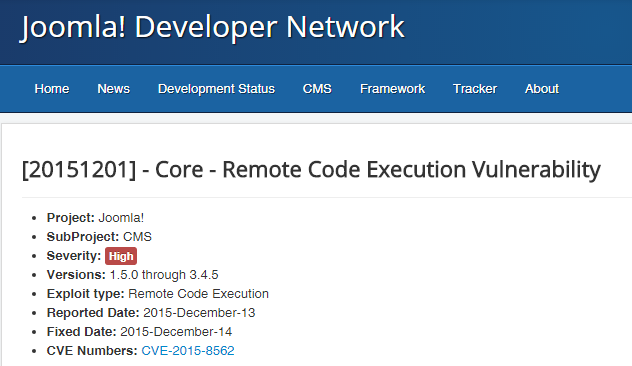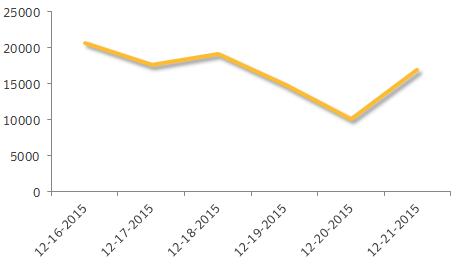Experts at Symantec discovered that hackers quickly take advantage of CVE-2015-8562 remote code execution to compromise Joomla servers.
Joomla recently patched the CVE-2015-8562 vulnerability that could be exploited by attackers for remote code execution.
According to the security expert Daniel Cid from Sucuri, hundreds of attacks are now taking place.
“What is very concerning is that this vulnerability is already being exploited in the wild and has been for the last 2 days. Repeat: This has been in the wild as a 0-day for 2 days before there was a patch available.” States the blog post published by Sucuri.
“The wave of attacks is even bigger, with basically every site and honeypot we have being attacked [which] means that probably every other Joomla site out there is being targeted as well.”
The zero-day flaw could have a significant impact on the Internet users considering that Joomla is the most popular content management system having been downloaded more than 50 million times.

According to a security advisory published by Joomla, all versions above 1.5 are affected. It is important to update the CMS version to the patched version 3.4.6.
News of the day is that experts at Symantec have detected up to 20,000 daily attempts to exploit the Joomla CVE-2015-8562 vulnerability that has been fixed with the release of Joomla 3.4.6 and hotfixes for versions 1.5 and 2.5.

Symantec has been monitoring attack attempts against websites using vulnerable Joomla websites and detected, on average, 16,000 daily hits since the experts at Sucuri disclosed the flaw.
“Since the Joomla! RCE vulnerability was discovered, servers running vulnerable versions of the CMS are actively being scanned for and attacked. On average, we are detecting more than 16,600 attacks per day on vulnerable Joomla! servers.” states Symantec.
Cyber criminals exploit the CVE-2015-8562 vulnerability to fully compromise servers and abuse them to serve malware redirecting victims to exploit kits, or to launch other attacks such as distributed denial-of-service (DDoS) attacks.
“The exploit code is relatively easy to deploy and doesn’t require much skill, all that is needed is a single HTTP request. According to our telemetry, the methods attackers are using to scan for vulnerable versions of Joomla! is similar to methods we covered in a recent blog on an RCE vulnerability in the vBulletin platform.” states a blog post published by Symantec. “Attackers are scanning for servers running vulnerable versions of Joomla! by attempting to call a phpinfo() function or printing out an MD5 of a predetermined value.”

According to researchers, threat actors in the wild are scanning the Internet searching for vulnerable servers, they are sending out HTTP requests and analyzing responses when functions such asphpinfo()and eval(chr()) are executed.
Once the hackers identify a vulnerable server thay compromise it by installing a backdoor that allows them to control the machine and execute any kind of commands.
Administrators can check their web servers and examine access logs for suspicious activities, such as anomalous requests.
Source:https://securityaffairs.co/

Working as a cyber security solutions architect, Alisa focuses on application and network security. Before joining us she held a cyber security researcher positions within a variety of cyber security start-ups. She also experience in different industry domains like finance, healthcare and consumer products.











